INTRODUCTION
I prefer to leave burden and honour to the authors (Paul Ekman) for a possible technical explanation about what is the FACS – Facial Actions Coding System, about the extraordinary scientific applications have been made since its creation and new frontiers and future applications, and about who can be an awesome mentor in FACS (Erika Rosenberg) and an excellent trainer that could prepare people to take the FACS Test Exam.
Every detail on how to use the FACS will be exhaustively explained itself in the Manual, which is and will always represent for a FACS Coder an indispensable guide, to be consulted every times codify facial expressions is necessary.
As “old school” FACS Coder Certificate (when I was learning FACS it was still in a CD-ROM format, I studied it non-stop for 6 months with many effort and difficulty, doing every day the exercises at the end of every Chapters of the Manual before felt me comfortable and ready for the exam) that is lucky in apply this extraordinary method in its profession as Consultant, I will try to give only some practical advice to the new FACS Coders who wants to start coding photos and videos of facial expressions.
Dr. Luca Marzari
What does the face express?
According to Ekman, the face has four types of signals, able to convey informations:
- static: more or less permanent aspects of the face. Examples are: skin pigmentation (color); the shape of the face; the bone structure; cartilages; fat deposits; the size, shape and position of the features (for example: eyebrows, eyes, nose, mouth).
- slow variation: changes in appearance that gradually occur over time. Examples are: permanent wrinkles; changes in muscle tone; the alterations of the grain and pigmentation of the skin (in old age).
- rapid: movements of the facial muscles, which produce transient changes in the appearance of the face. Examples are: temporary wrinkles and changes in shape and position of the features (these changes are fast on the face: they last seconds or fractions of a second).
- artificial: use of accessories or other, which disguise the usual appearance of the face. Examples are: glasses; a long beard; the shape of the hair (fringe or other); the use of cosmetics (to change skin color, cover wrinkles, etc.); the use of botulinum, which gives a “stretched” and youthful appearance to the face, but partially paralyzes nerves and muscles, affecting the possibility of performing facial expressions.
The facial signals that are important for FACS Coder are the rapid signals.
Before to notice them we must discover the baseline of the neutral faceof the subjects we want to observe, in order to keep under control the variable “personal physiognomic peculiarity of a subject” = for remove the influences of possible pre-existing static signals and artificial signals. After that, we could focus our attention in codify only the rapid signals (emotional or communicative facial expressions).
Let’s take an example, in order to better clarify this extremely important point.
A video of an experimental subject is delivered to a FACS Coder; the subjects face in the foreground has been videotaped.
The subject had watched videos that triggered him strong emotions (sadness, anger, fear and happiness).
If the FACS Coder wants to avoid errors or false positives, he must first notes every pre-existing static signal:
- the FACS Coder note that the shape of the subject’s mouth is particular, as the angles are turned slightly downwards, by default;
- the FACS Coder note in addition that the subject has bags visible under the eyes, in the region of the lower eyelid;
- CASE LIMIT: the subject has a thick beard covering his face, making it difficult to notice the slight movements of the cheeks or lips;

- CASE LIMIT: the subject has a fringe, which partially covers the forehead;

- CASE LIMIT: the subject is lit too much or too less, so the video is of poor quality;

- CASE LIMIT: the subject has a frame of the black glasses, which partially covers the shape of the eyes and eyebrows;
- CASE LIMIT: the subject has no make-up, but the shots immortalize him with a filter that makes it almost impossible to notice wrinkles or shapes, and alters their features.

If the FACS Coder disregard all these elements, she/he risk to make a lot of mistakes:
- could misunderstand the info and decodify (EMFACS), from the beginning of the video, a presence of sadness that may not exist in the observed subject, misinterpreting the angles of the mouth facing downwards;
- could decodify anger or cognitive load, exchanging natural bags under the eyes of the subject as activations or tension of the lower eyelid;
- if the FACS Coder, in a lazy way, does not focus himself on the upper face part (eyes, eyebrows and forehead), assuming that nothing can be seen because of the fringe and glasses, it will probably risks to lose a lot of useful information.
- however, asking to short-sighted subject to remove his/her glasses, could create to him/ to her extreme problems in watching the video stimuli: for sure he/she will put down and reunite his/her eyebrows and / or tighten the lower eyelids, because of the effort in try to see better. It could be wrongly interpreted as a facial expression of cognitive loading (thinking, remembering, taking time to respond), or as a controlled anger. But of course it is not.

A good observer codifies and annotates each element, taking care of the onset, the peak and the offset of the movement in order to distinguish what is stably present from the beginning (baseline) from these momentary elements, and from this difference the FACS Coder will continue to analyze the next movements of the muscles of the face.
An another baseline should be considered, watching the entirety of the video, in order to collect all the non-verbal behaviors who are not useful or that create negatively influence to the interpretation (meaningless grimaces or possible tics, great postural changes, itching, considering whether the subject is talking during the video or if he chews a chewing-gum, etc.). Reduce the noise, before to do errors.
Check every movements of cheeks and mouth before to codify mouth's AUs
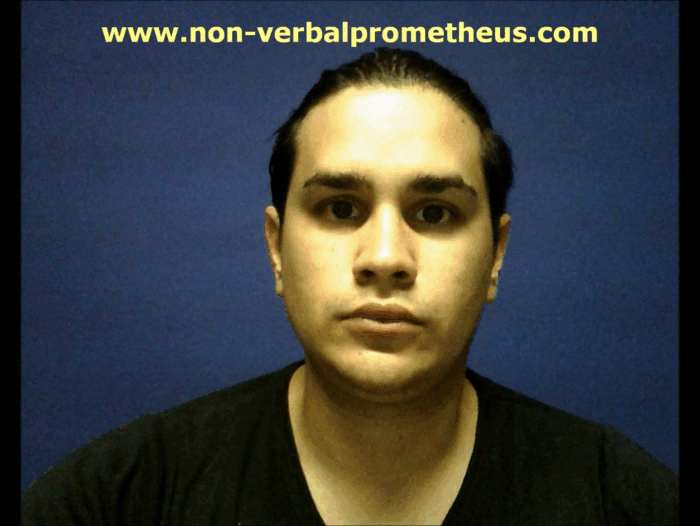
Brief description of the Facial Action Coding System (FACS)
Paul Ekman and Wally Friesen (1978) devoted themselves to the drafting of the first atlas of the human face, the Facial Action Coding System (FACS), with a systematic description in words, photographs and films of how to measure facial movements in anatomical terms, breaking them down into single movement units (AU – Action Unit).
Ekman and Friesen have calculated 44 AUs (Action Units) that consider variations in facial expressions, and 14 AUs that interpret the changes in the direction of the gaze and in the orientation of the head. The combinations obtainable, by the combined effect of several Action Units activated at the same time in the face, cover the totality of all the possible facial configurations that a human being can assume (more than 10,000 in total).
A FACS Certified Coder can interpret almost all facial expressions, breaking them down into specific units of action and subdividing them into their temporal phases.
Useful illustrations that will facilitate the comprehension and the learning (performed in high intensity – D or E level – with the only goal of facilitating the viewing of the AUs in action), are included in Table 1.
FACS is a research tool useful for measuring any facial expression that a human being can achieve. The individual Action Units constitute the essence of the whole “atlas”; in Table 1 some examples are now provided with: nomenclature (name of the AU), descriptive incipit (movement and description), images of the separate activation of individual Action Units, compared with images of the neutral face of the subject.
Important: Table 1 was created with only one goal of being a brief and helpfull memorandum of the Facial Action Coding System AUs (like pag. 526 of the FACS Manual), in order to cover some possible (human and normal) temporary “lack of memory” of the FACS Coders, and could be consulted in case of doubt during a facial expressions videos analysis. This online tool is NOT the FACS Manual and could NOT substitute it in any occasion: only the FACS – Facial Actions Coding System Manual and Investigators Guide are the most complete and reliable tools for deeply study the amazing world of human Facial Expressions.
More info:
- 2015 – Luca Marzari, Maurizio Mauri, Anna Missaglia, Paola Orifiammi, Fabio Giulini (2015), “La metodologia scientifica di Paul Ekman: l’osservatore umano come strumento di codifica e decodifica delle azioni comunicative del volto”, in Vincenzo Russo,Neuromarketing, comunicazione e comportamenti di consumo. Principi, strumenti e applicazioni nel food and wine, FRANCO ANGELI.
Table 1
Action Unit
AU 0
Movement / Description
None
Facial Muscle involved
None
AU 0 (Neutral Face)
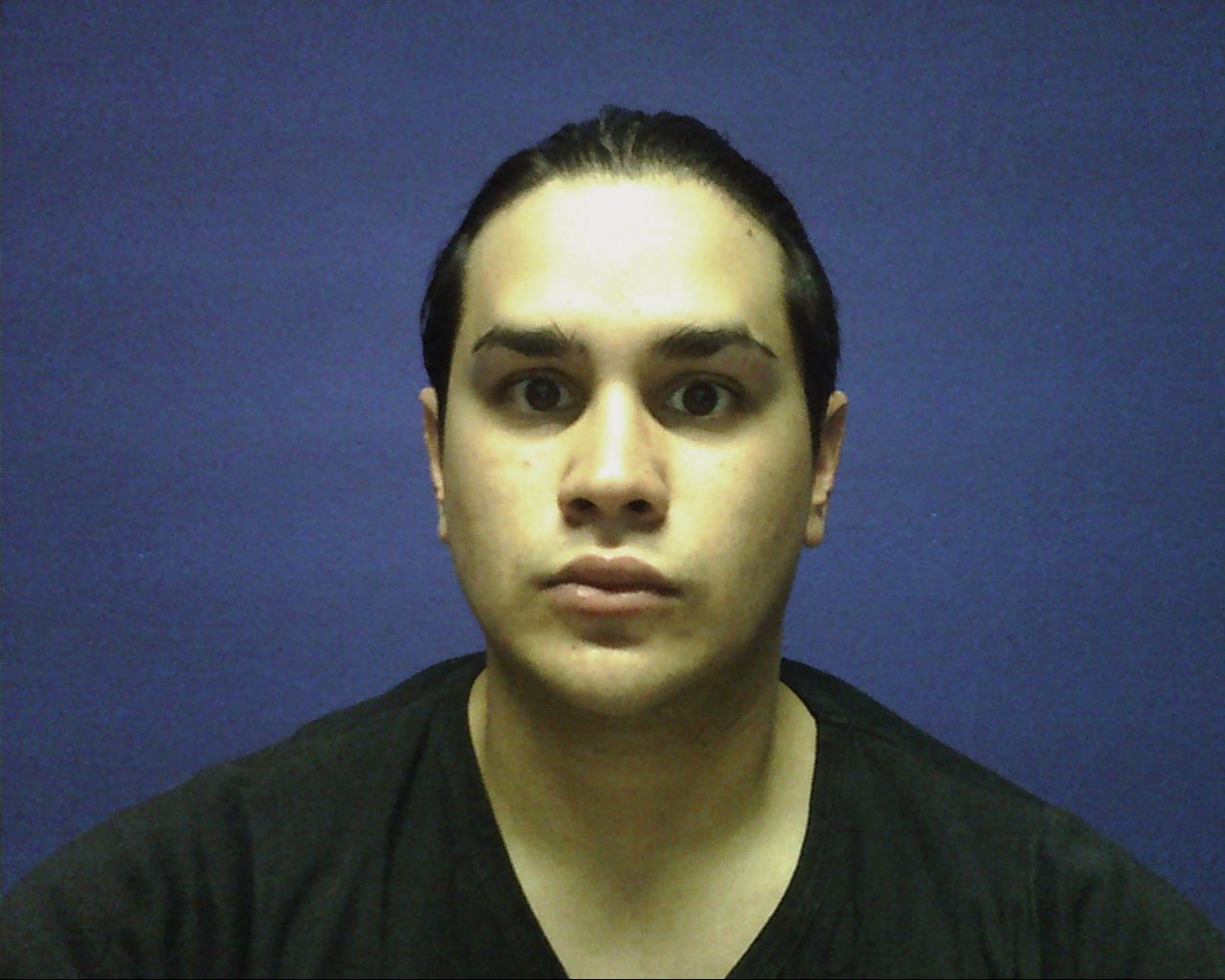

Action Unit
AU 1
Movement / Description
Inner Brow Raiser
Facial Muscle involved
Frontalis, pars medialis
From AU 0 to AU 1
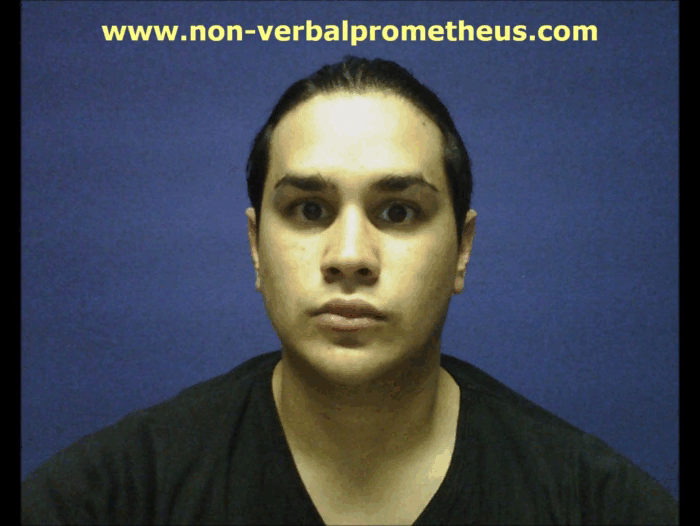

Action Unit
AU 2
Movement / Description
Outer Brow Raiser
Facial Muscle involved
Frontalis, pars lateralis
From AU 0 to AU 2
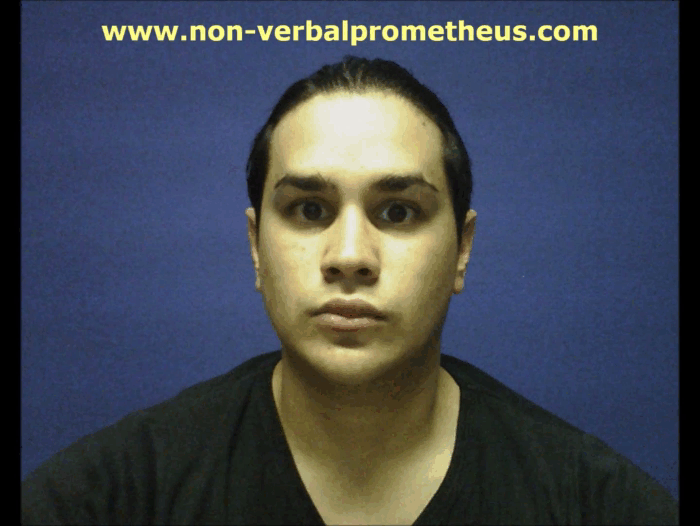

Action Unit
AU 4
Movement / Description
Brow lowerer
Facial Muscle involved
Frontalis, pars medialis
From AU 0 to AU 4
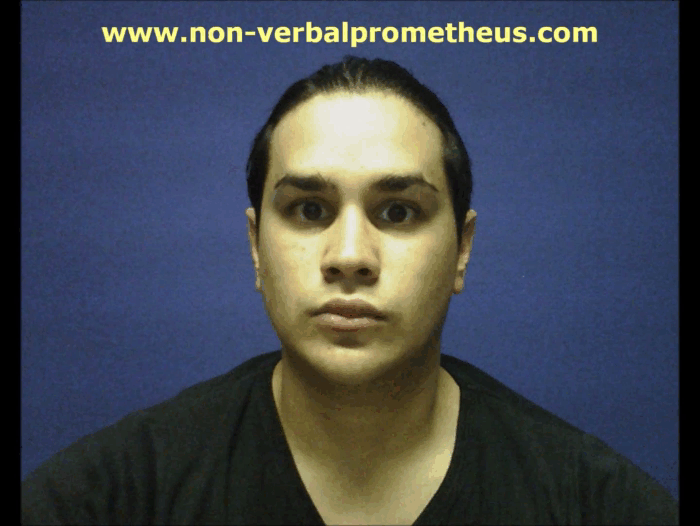

Action Unit
AU 5
Movement / Description
Upper Lid Raiser
Facial Muscle involved
Levator palpebrae superioris
From AU 0 to AU 5
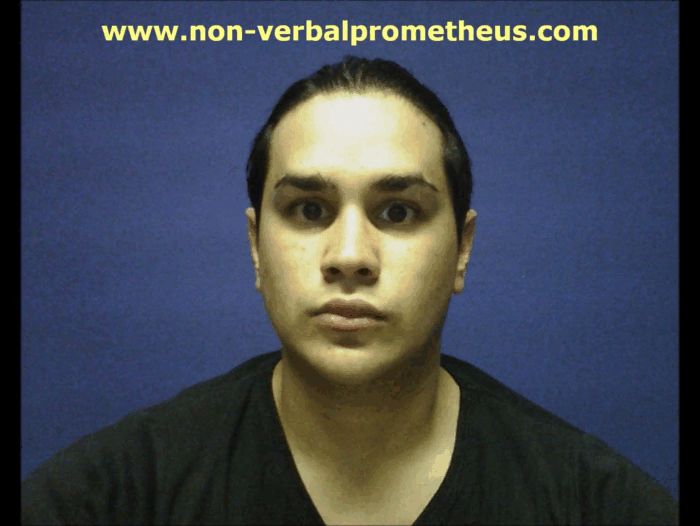

Action Unit
AU 6
Movement / Description
Cheek Raiser
Facial Muscle involved
Orbicularis oculi, pars orbitalis
From AU 0 to AU 6
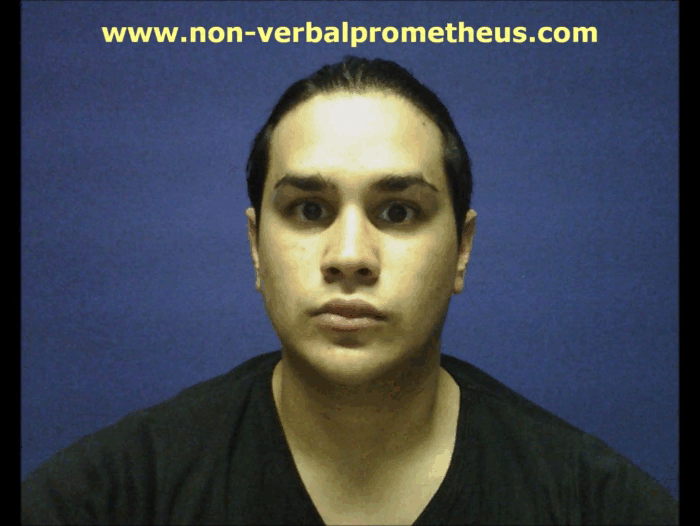

Action Unit
AU 7
Movement / Description
Lid Tightener
Facial Muscle involved
Orbicularis oculi, pars palpebralis
From AU 0 to AU 7


Action Unit
AU 8 (+AU 25 + AU 26)
Movement / Description
Lips toward
Facial Muscle involved
Orbicularis oris
From AU 0 to AUs 8+25+26
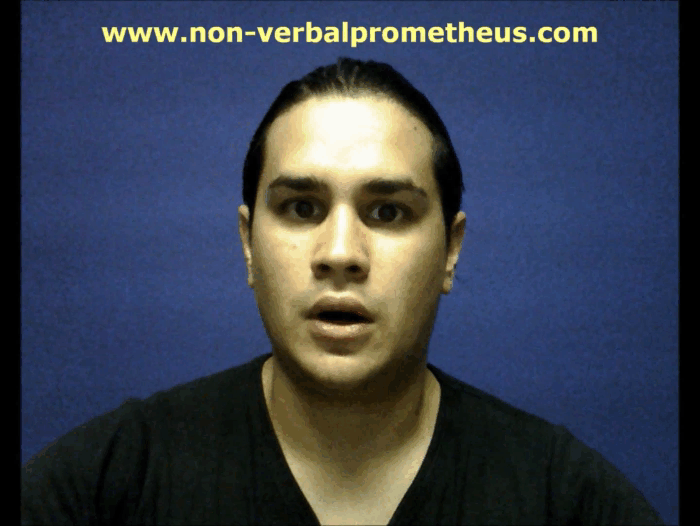

Action Unit
AU 9
Movement / Description
Nose Wrinkler
Facial Muscle involved
Levator labii superioris alaquae nasi
From AU 0 to AU 9
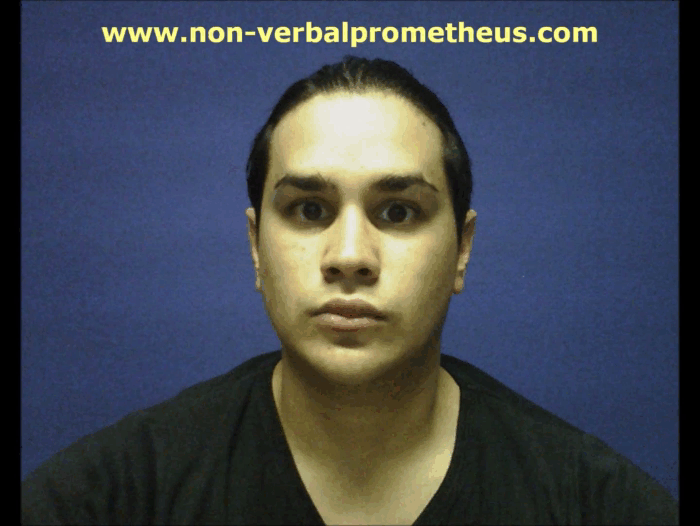

Action Unit
AU 10
Movement / Description
Upper Lip Raiser
Facial Muscle involved
Depressor Glabellae, Depressor Supercilli, Currugator
From AU 0 to AU 10
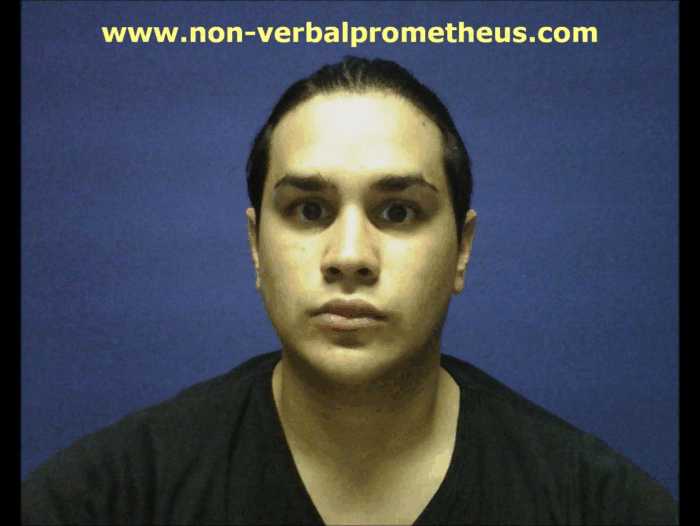

Action Unit
AU 11
Movement / Description
Nasolabial Deepener
Facial Muscle involved
Zygomatic Minor
From AU 0 to AU 11
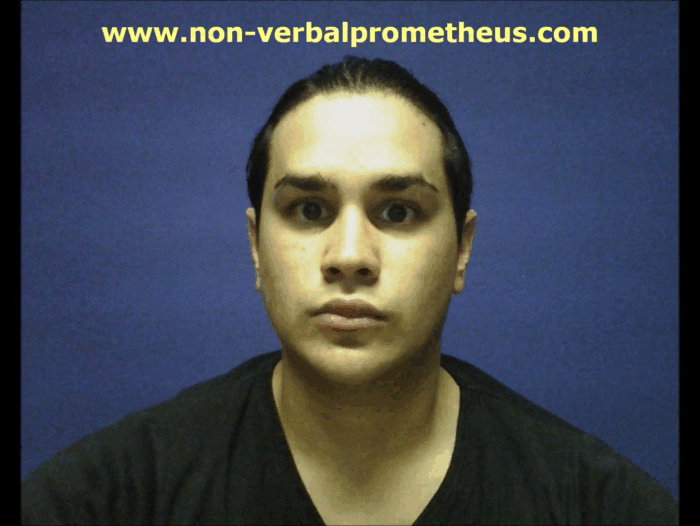

Action Unit
AU 12
Movement / Description
Lip Corner Puller (bilateral and unilateral)
Facial Muscle involved
Zygomatic Major
From AU 0 to AU 12 & U12
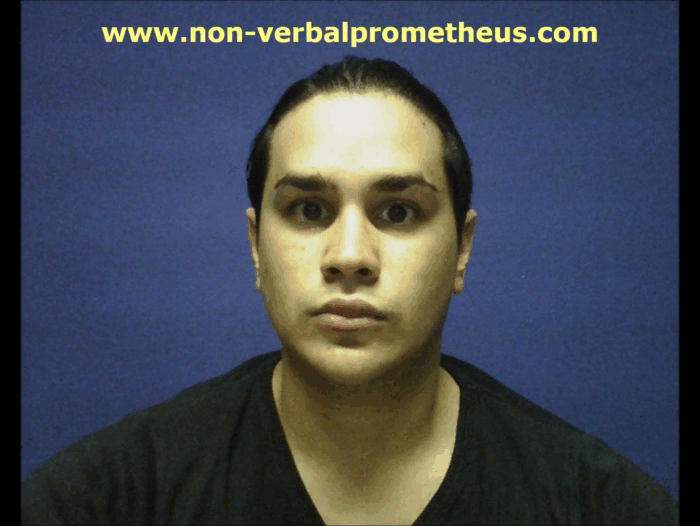

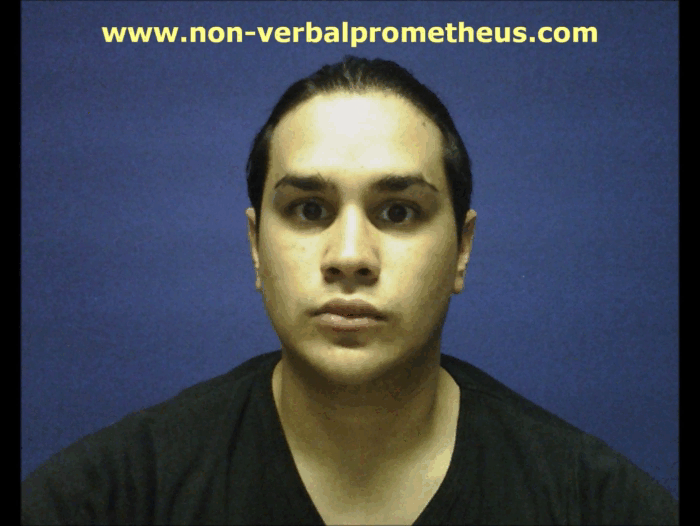

Action Unit
AU 13
Movement / Description
Cheek Puffer
Facial Muscle involved
Levator anguli oris (Caninus)
From AU 0 to AU 13
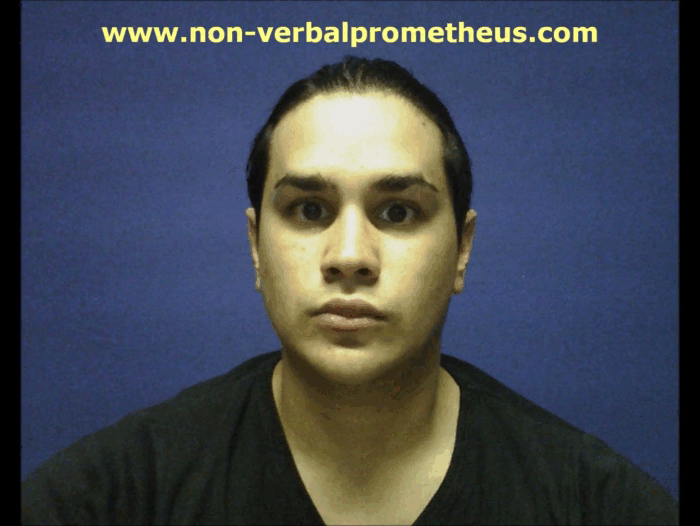

Action Unit
AU 14
Movement / Description
Dimpler (bilateral and unilateral)
Facial Muscle involved
Buccinator
From AU 0 to AU 14 & U14


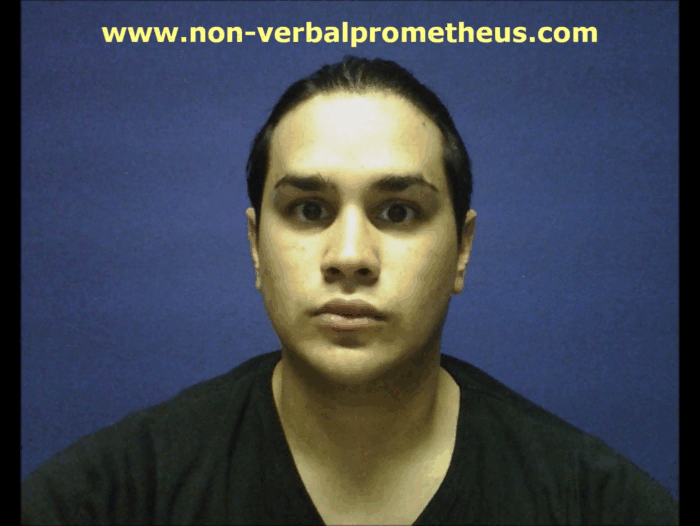

Action Unit
AU 15
Movement / Description
Lip Corner Depressor
Facial Muscle involved
Depressor anguli oris (Triangularis)
From AU 0 to AU 15
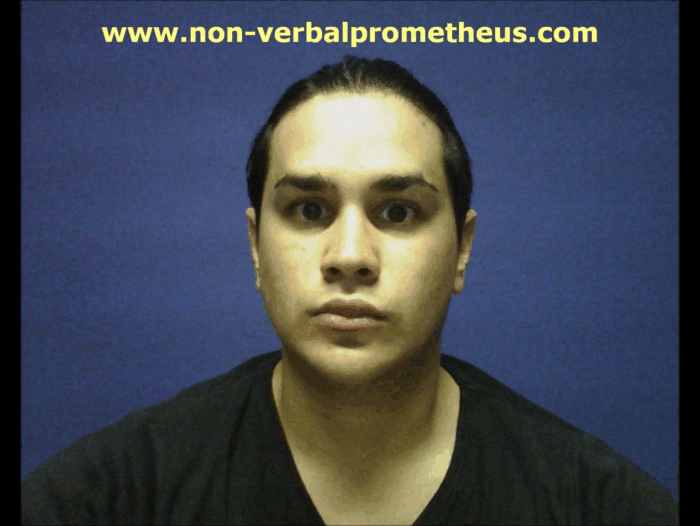

Action Unit
AU 16 (+ AU 25)
Movement / Description
Lower Lip Depressor
Facial Muscle involved
Depressor labii inferioris
From AU 0 to AUs 16+25
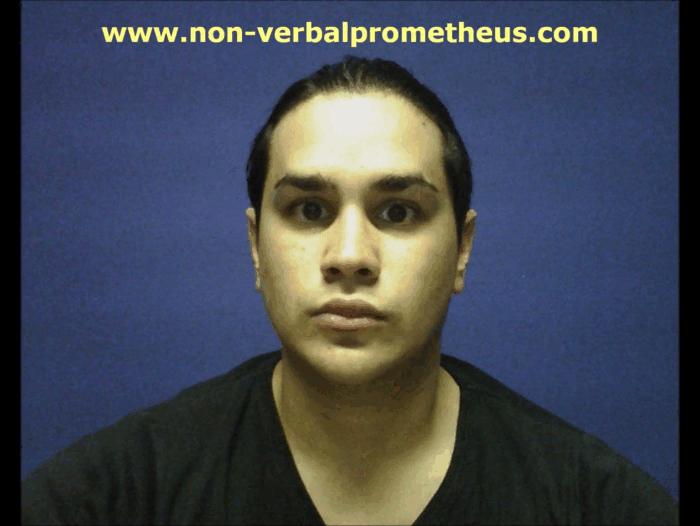

Action Unit
AU 17
Movement / Description
Chin Raiser
Facial Muscle involved
Mentalis
From AU 0 to AU 17
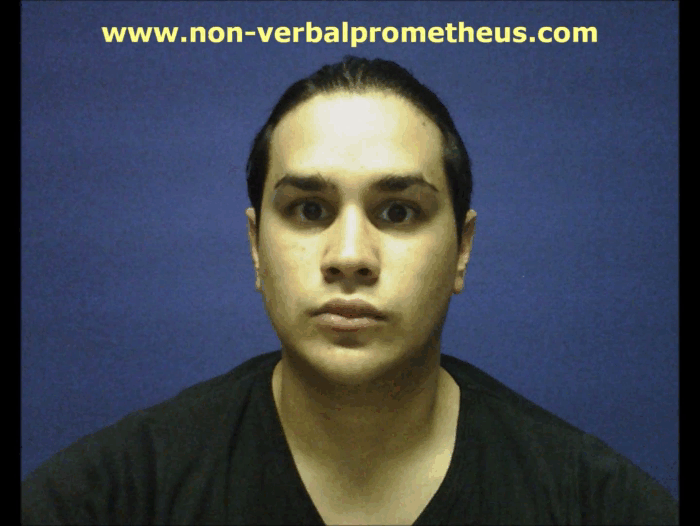

Action Unit
AU 18
Movement / Description
Lip Puckerer
Facial Muscle involved
Incisivii labii superioris and Incisivii labii inferioris
From AU 0 to AU 18
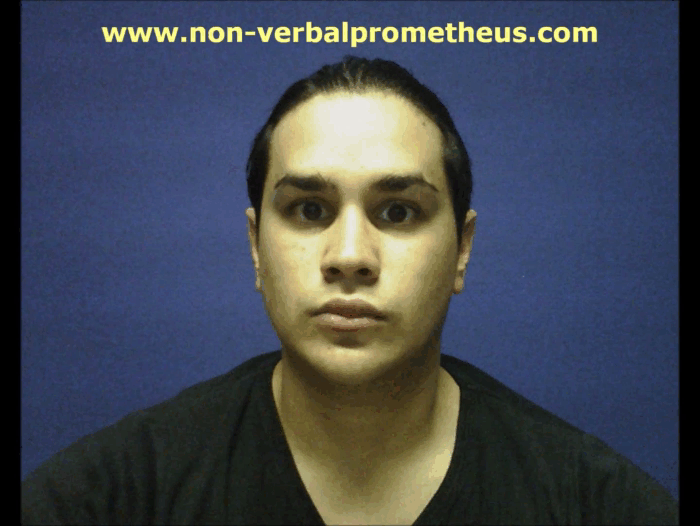

Action Descriptor
AD 19
Movement / Description
Tongue show
Facial Muscle involved
–
From AU 0 to AD 19
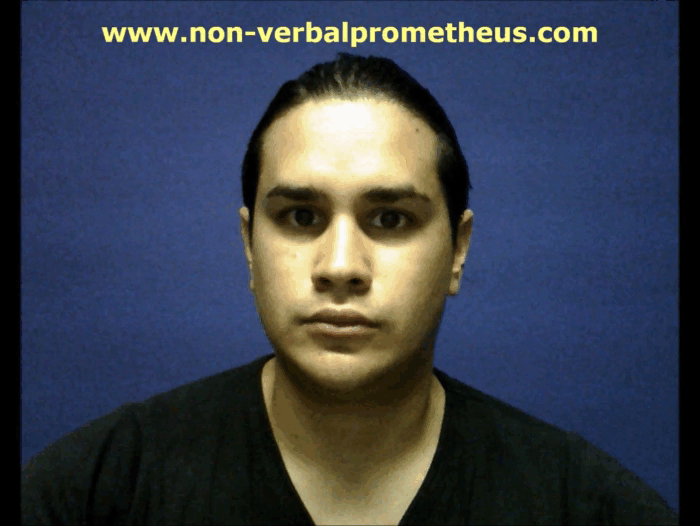

Action Unit
AU 20
Movement / Description
Lip stretcher
Facial Muscle involved
Risorius
From AU 0 to AU 20
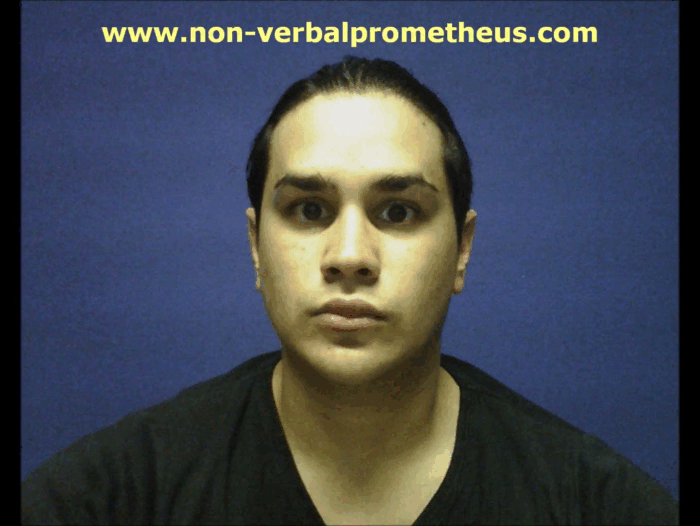

Action Unit
AU 21
Movement / Description
Neck tighten
Facial Muscle involved
–
From AU 0 to AU 21
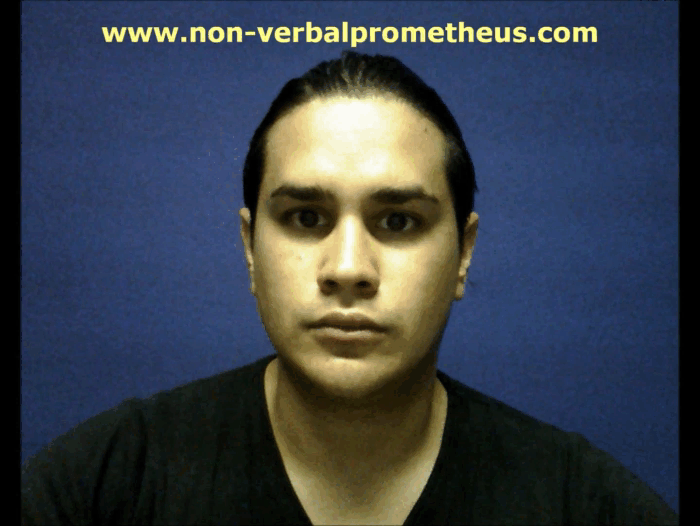

Action Unit
AU 22 (+ AU 25)
Movement / Description
Lip Funneler
Facial Muscle involved
Orbicularis oris
From AU 0 to AUs 22+25
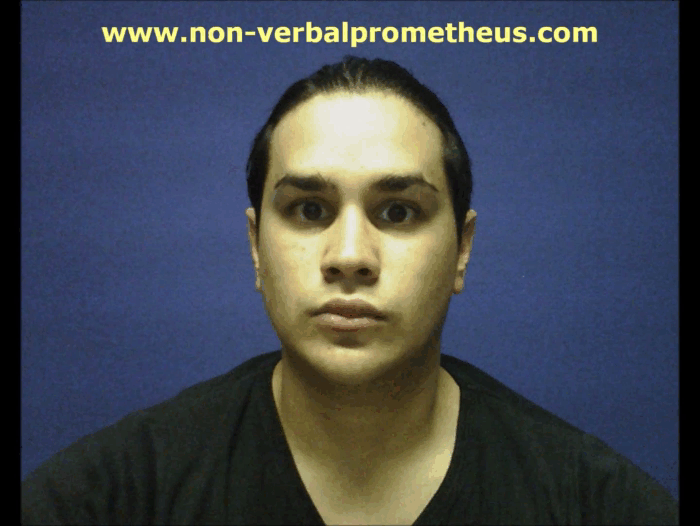

Action Unit
AU 23
Movement / Description
Lip Tightener
Facial Muscle involved
Orbicularis oris
From AU 0 to AU 23
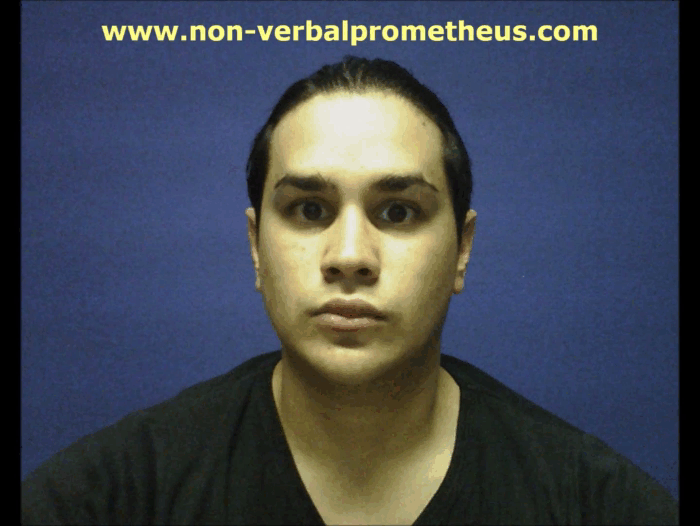

Action Unit
AU 24
Movement / Description
Lip Pressor
Facial Muscle involved
Orbicularis oris
From AU 0 to AU 24
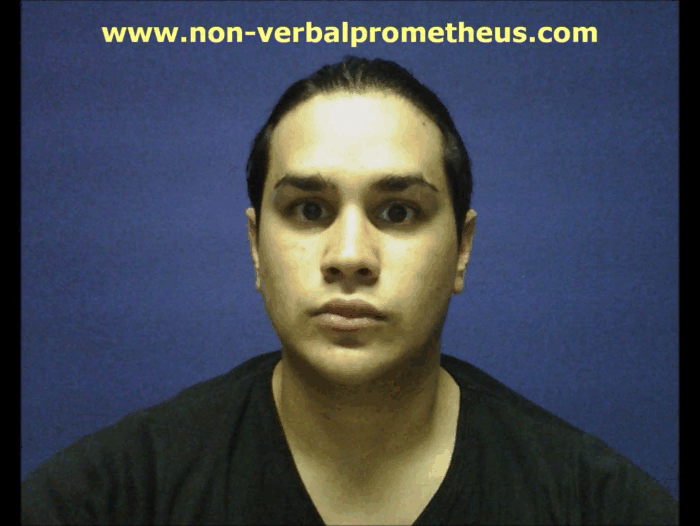

Action Unit
AU 25
Movement / Description
Lips part
Facial Muscle involved
Depressor Labii, Mentalis (relaxation of it), Orbicularis Oris
From AU 0 to AU 25
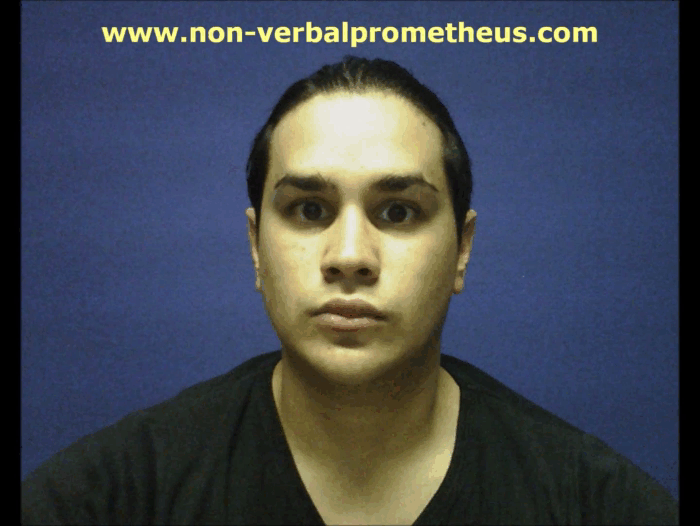

Action Unit
AU 26 (variants)
Movement / Description
Jaw Drop
Facial Muscle involved
Masetter; Temporal and Internal Pterygoid (relaxation of them)
From AU 0 to AU 26 (AUs 17+24 involved)
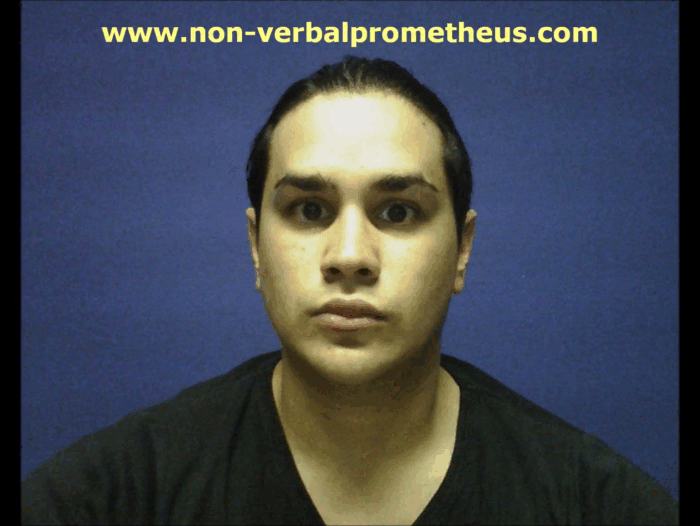

From AU 0 to AUs 25+26
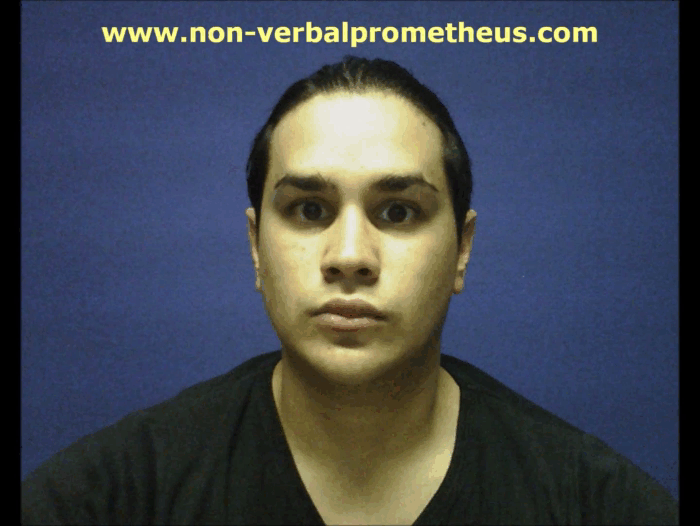

Action Unit
AU 27 (variants)
Movement / Description
Mouth Stretch
Facial Muscle involved
Pterygoids, Digastric
From AU 0 to AU 27 (AUs 17+24 involved)
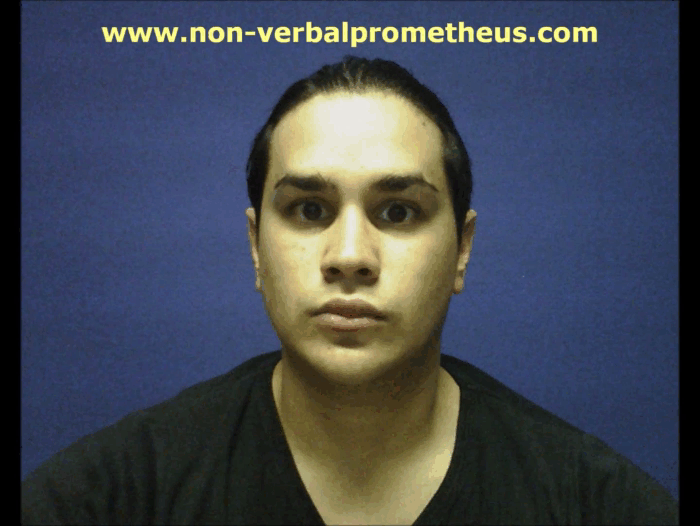

From AU 0 to AUs 25+27
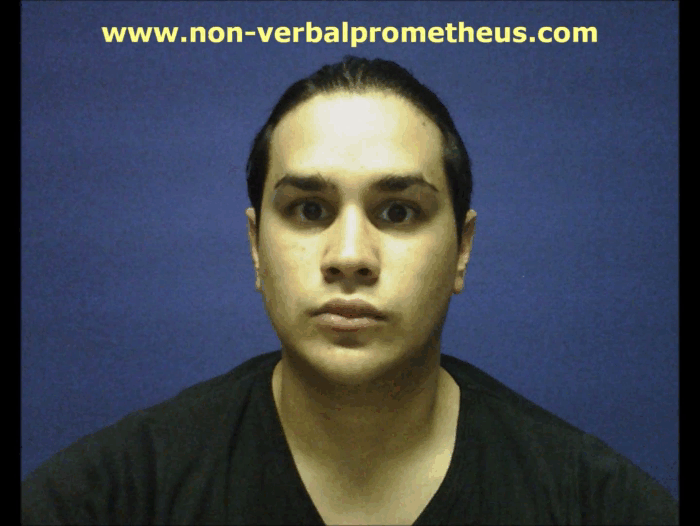

Action Unit
AU 28 (+ AU 26)
Movement / Description
Lip Suck
Facial Muscle involved
Orbicularis oris
From AU 0 to AU 28
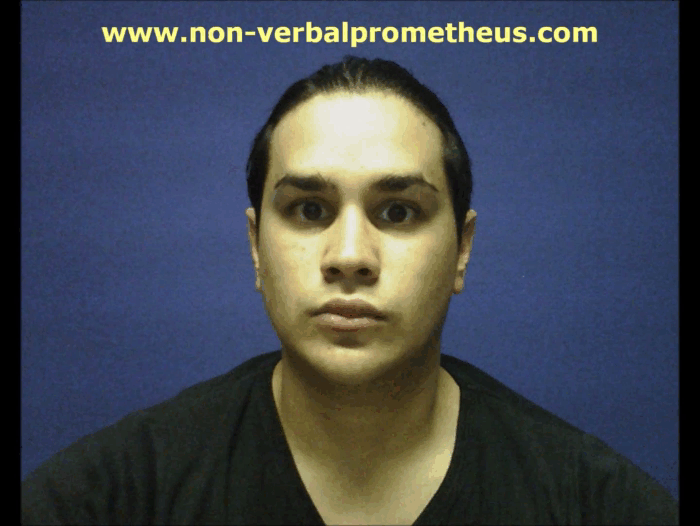

Action Descriptor
AD 29
Movement / Description
Jaw thrust
Facial Muscle involved
–
From AU 0 to AD 29
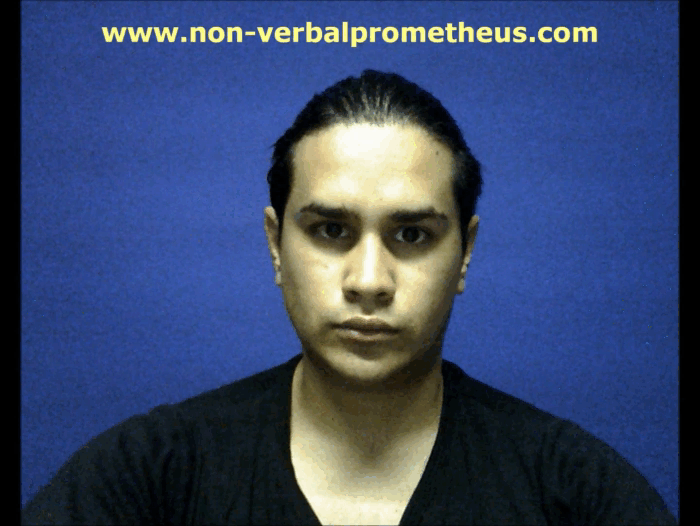

Action Descriptor
AD 30
Movement / Description
Jaw sideways
Facial Muscle involved
–
From AU 0 to AD 30
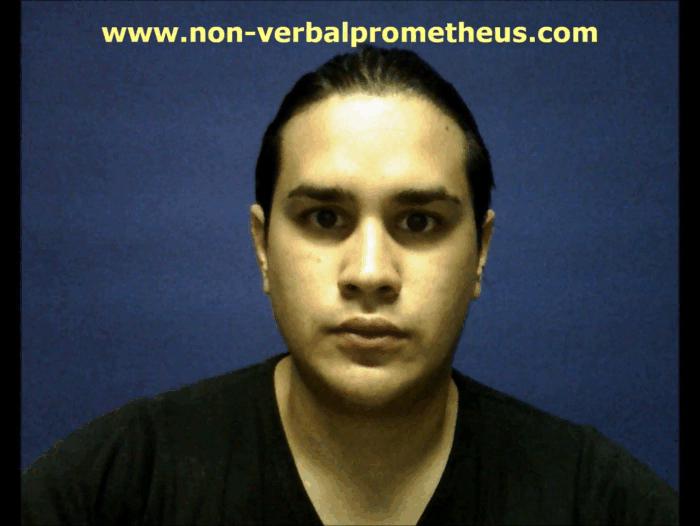

Action Unit
AU 31
Movement / Description
Jaw clench
Facial Muscle involved
–
From AU 0 to AU 31
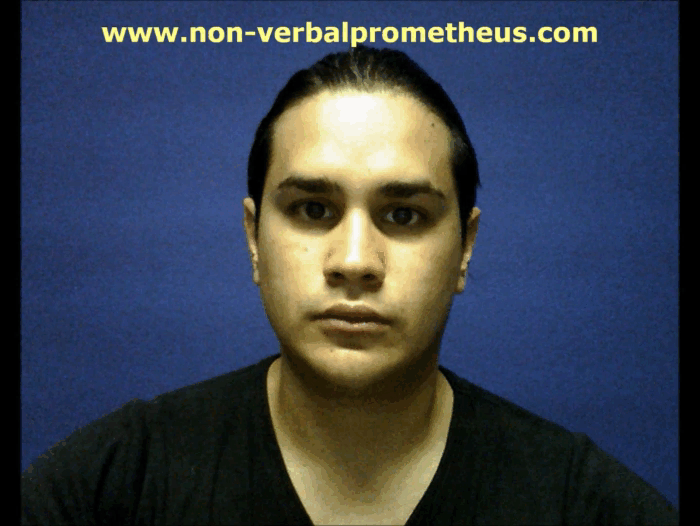

Action Descriptor
AD 32
Movement / Description
Bite lip
Facial Muscle involved
–
From AU 0 to AD 32
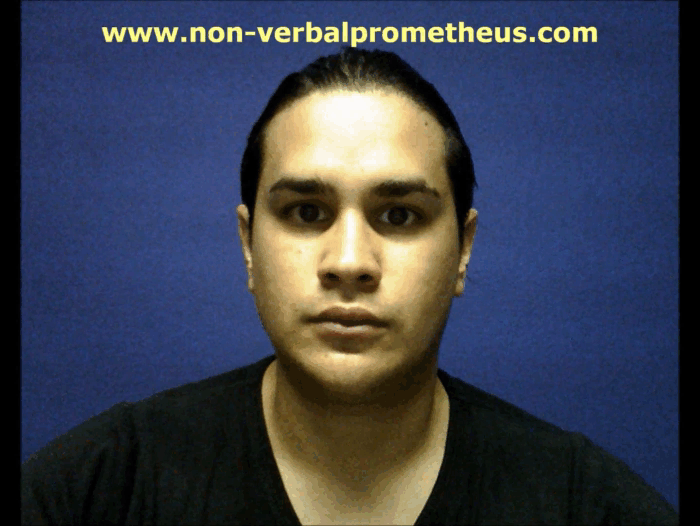

Action Descriptor
AD 33
Movement / Description
Blow
Facial Muscle involved
–
From AU 0 to AD 33
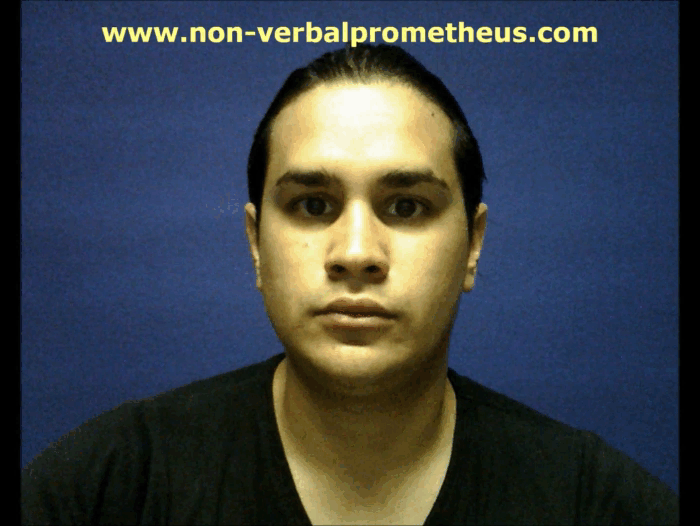

Action Descriptor
AD 34
Movement / Description
Puff
Facial Muscle involved
–
From AU 0 to AD 34
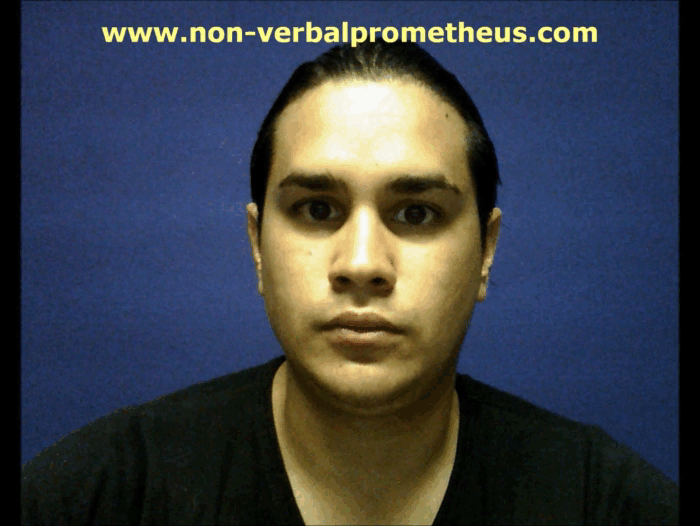

Action Descriptor
AD 35
Movement / Description
Cheek suck
Facial Muscle involved
–
From AU 0 to AD 35
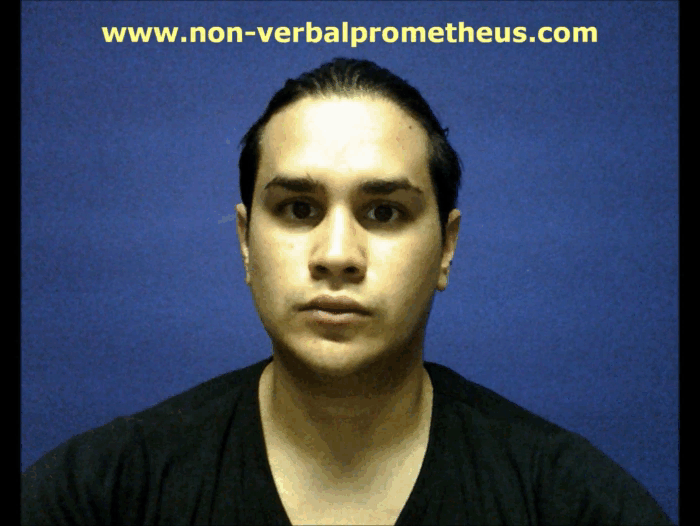

Action Descriptor
AD 36
Movement / Description
Tongue bulge
Facial Muscle involved
–
From AU 0 to AD 36
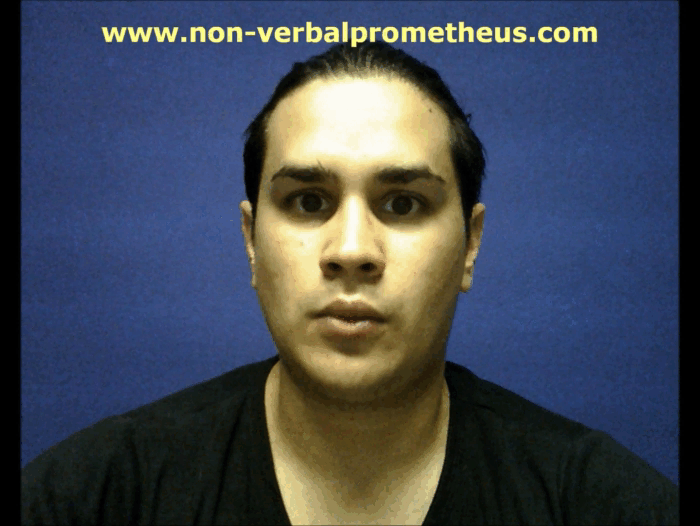

Action Descriptor
AD 37
Movement / Description
Lip wipe
Facial Muscle involved
–
From AU 0 to AD 37
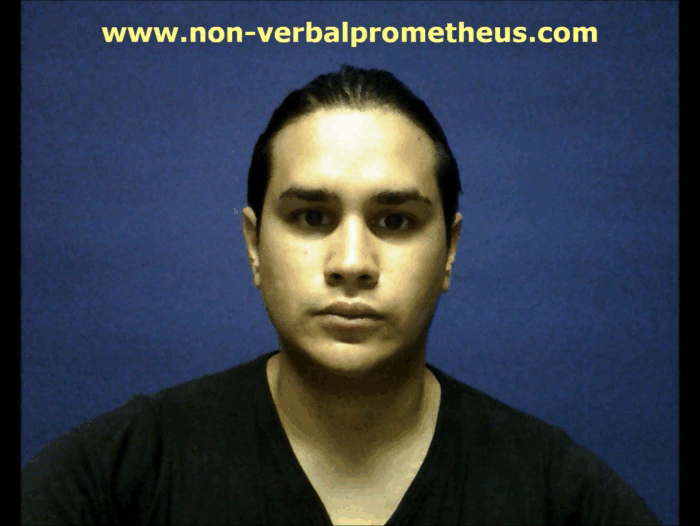

Action Unit
AU 38
Movement / Description
Nostril dilate
Facial Muscle involved
Nasalis; Pars Alaris
From AU 0 to AU 38
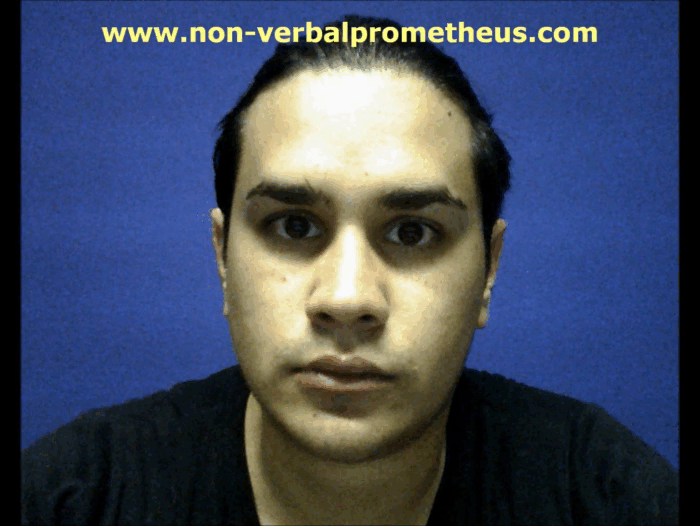

Action Unit
AU 39
Movement / Description
Nostril compress
Facial Muscle involved
Nasalis; Pars transversa and depressor septi nasi
From AU 0 to AU 39
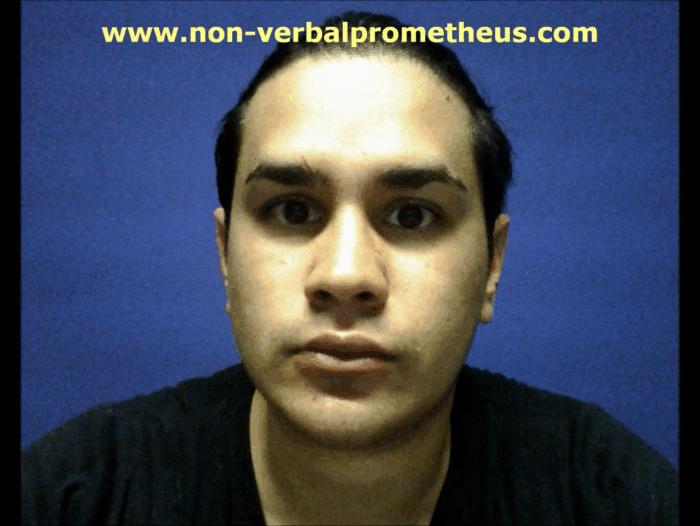

Action Descriptor
AD 40
Movement / Description
Sniff
Facial Muscle involved
–
From AU 0 to AD 40
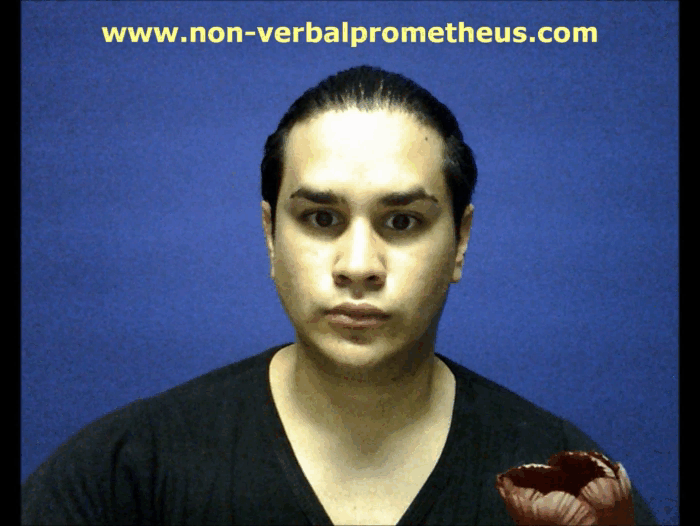

Action Unit
AU 43
Movement / Description
Eyes Closed
Facial Muscle involved
Levator Palpebrae Superioris (relaxation of it)
From AU 0 to AU 43
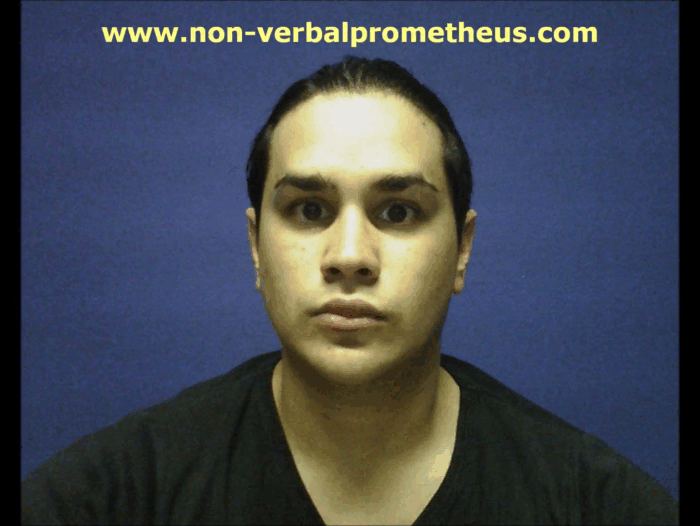

Action Unit
AU 45
Movement / Description
Blink
Facial Muscle involved
Levator palpebrae superioris (relaxation of it); Orbicularis oculi pars palpebralis
From AU 0 to AU 45
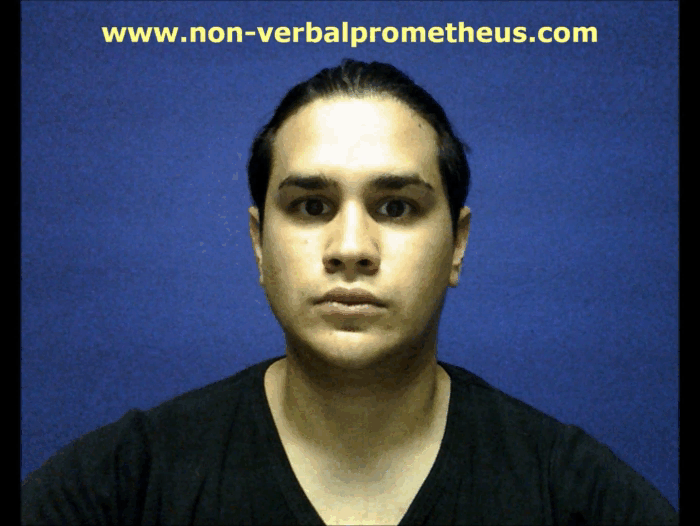

Action Unit
AU 46
Movement / Description
Wink
Facial Muscle involved
Levator palpebrae superioris; Orbicularis oculi, pars palpebralis
From AU 0 to AU 46
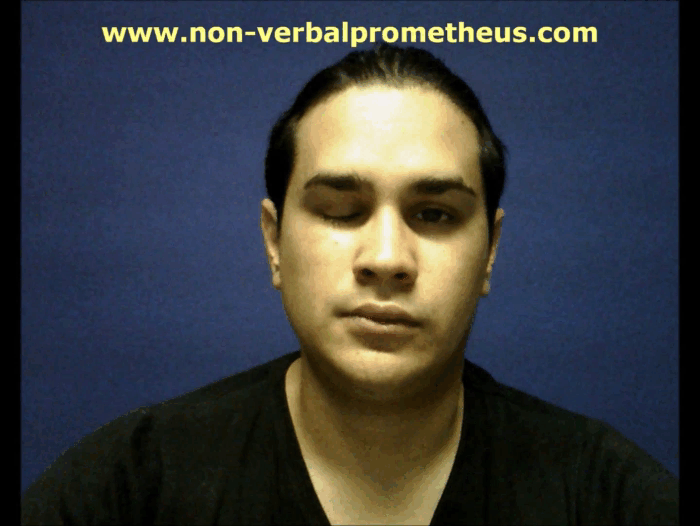

Action Descriptor
AD 50
Movement / Description
Talk
Facial Muscle involved
–
From AU 0 to AD 50
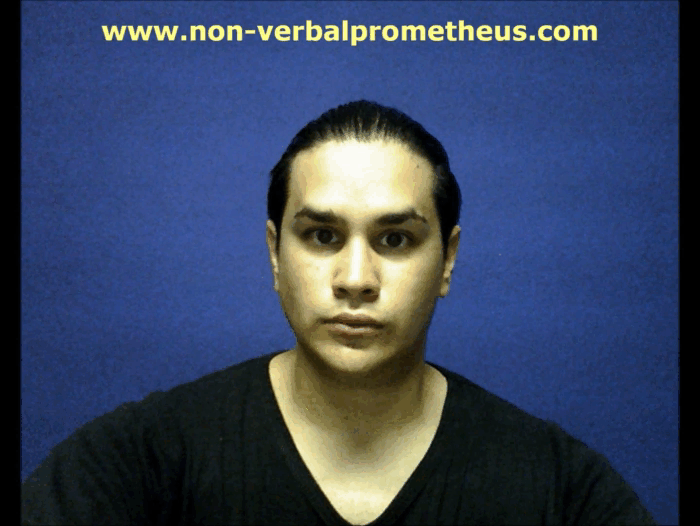

Head and Eye
51
Movement / Description
Head turn left
Facial Muscle involved
–
From AU 0 to 51
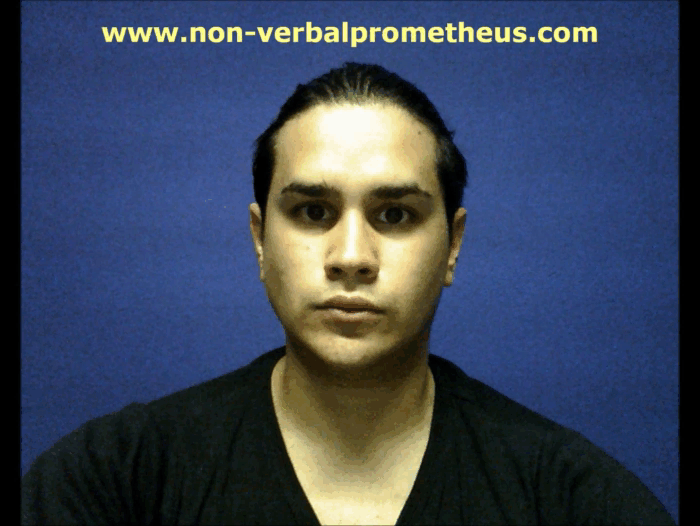

Head and Eye
52
Movement / Description
Head turn right
Facial Muscle involved
–
From AU 0 to 52
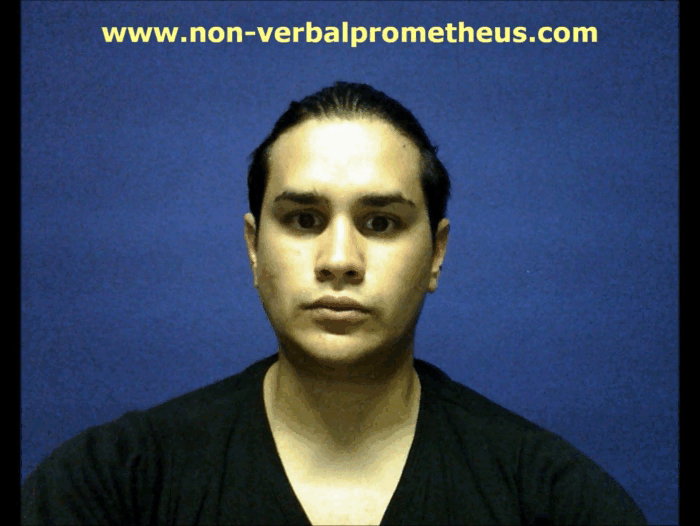

Head and Eye
53
Movement / Description
Head up
Facial Muscle involved
–
From AU 0 to 53
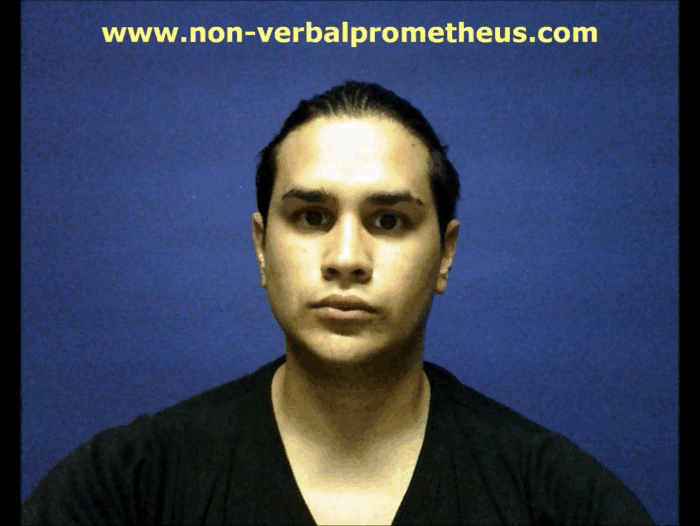

Head and Eye
54
Movement / Description
Head down
Facial Muscle involved
–
From AU 0 to 54


Head and Eye
55
Movement / Description
Head tilt left
Facial Muscle involved
–
From AU 0 to 55
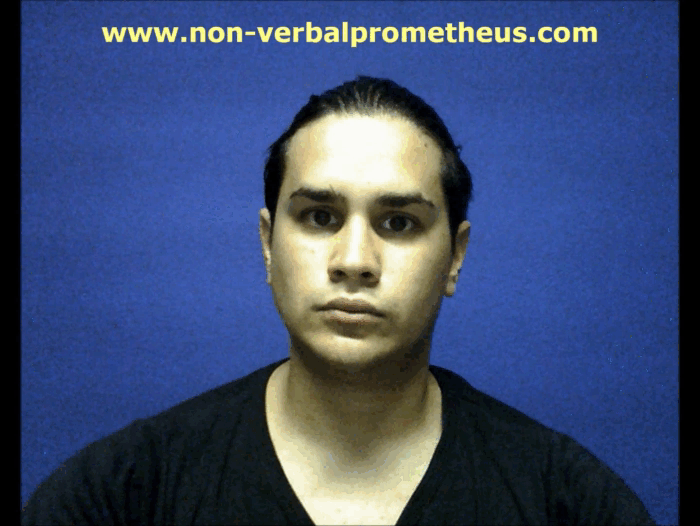

Head and Eye
56
Movement / Description
Head tilt right
Facial Muscle involved
–
From AU 0 to 56
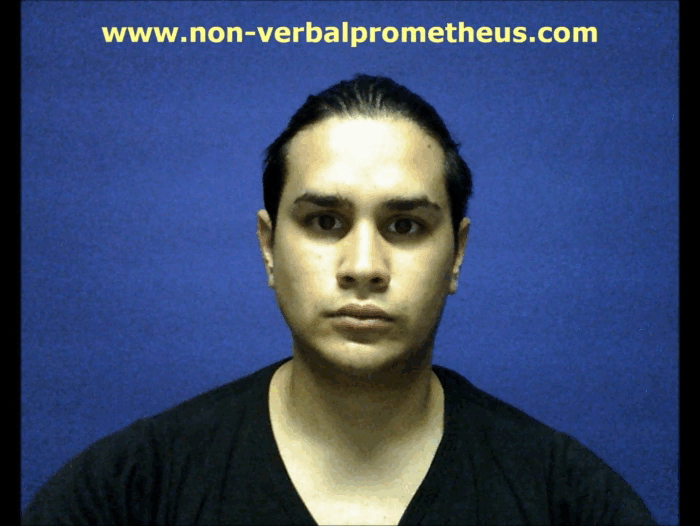

Head and Eye
57
Movement / Description
Head forward
Facial Muscle involved
–
From AU 0 to 57
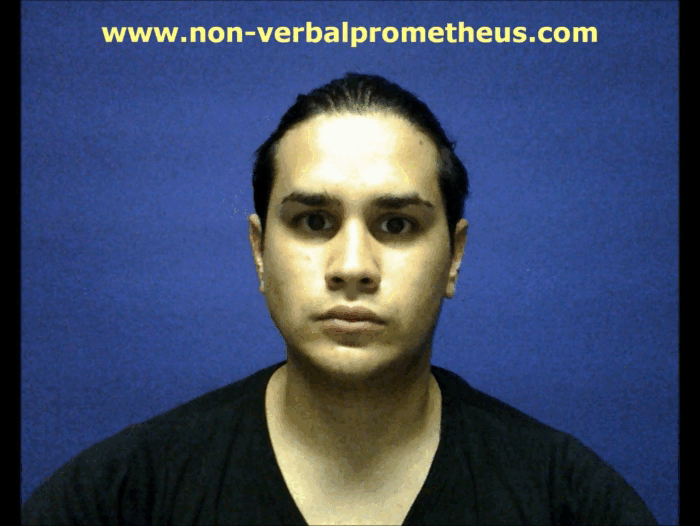

Head and Eye
58
Movement / Description
Head back
Facial Muscle involved
–
From AU 0 to 58
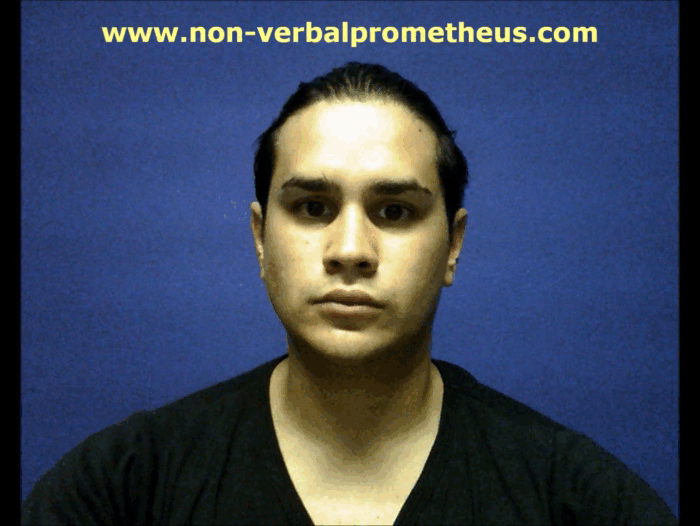

Head and Eye
M59
Movement / Description
Head shake up and down
Facial Muscle involved
–
From AU 0 to M59
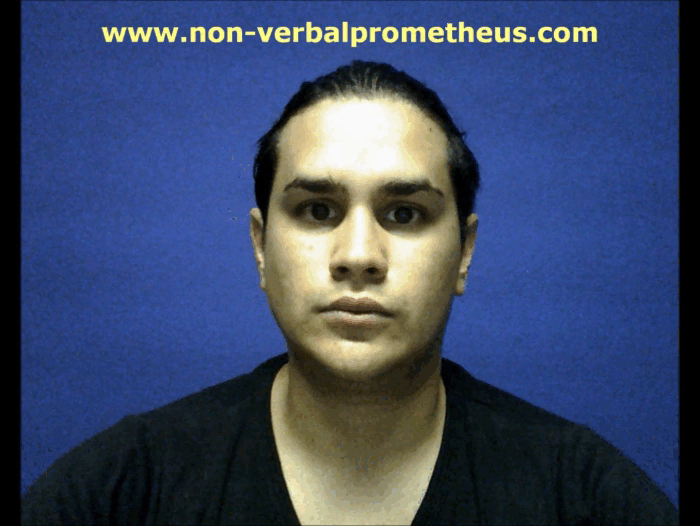

Head and Eye
M60
Movement / Description
Head shake side to side
Facial Muscle involved
–
From AU 0 to M60
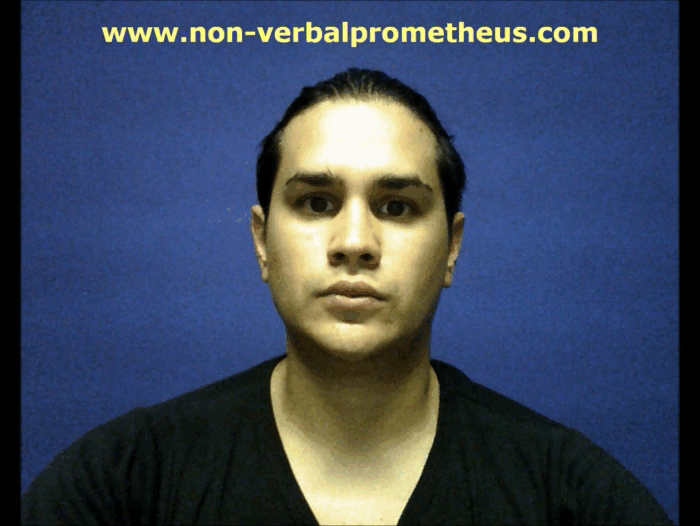

Head and Eye
61
Movement / Description
Eyes turn left
Facial Muscle involved
–
From AU 0 to 61


Head and Eye
62
Movement / Description
Eyes turn right
Facial Muscle involved
–
From AU 0 to 62
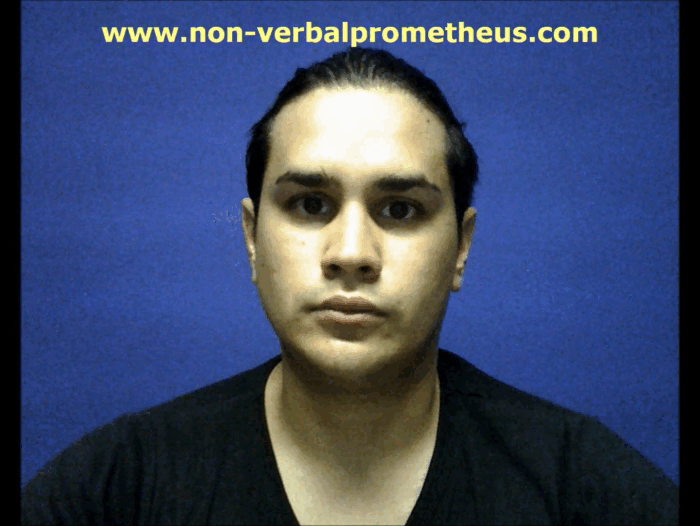

Head and Eye
63
Movement / Description
Eyes up
Facial Muscle involved
–
From AU 0 to 63
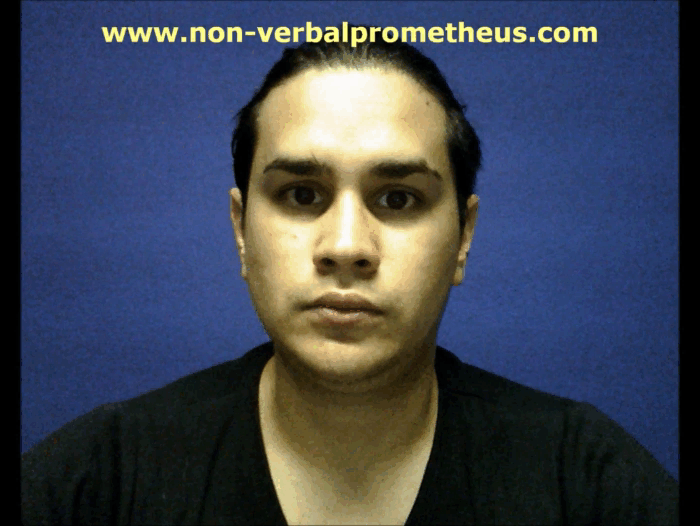

Head and Eye
64
Movement / Description
Eyes down
Facial Muscle involved
–
From AU 0 to 64
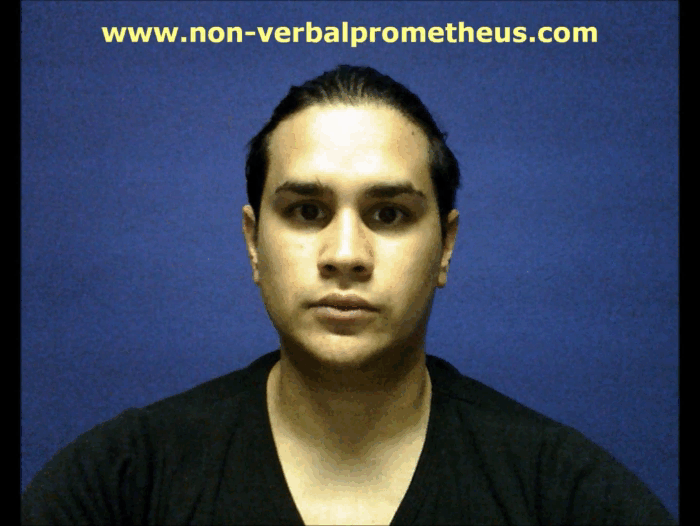

Head and Eye
65
Movement / Description
Walleye
Facial Muscle involved
–
From AU 0 to 65
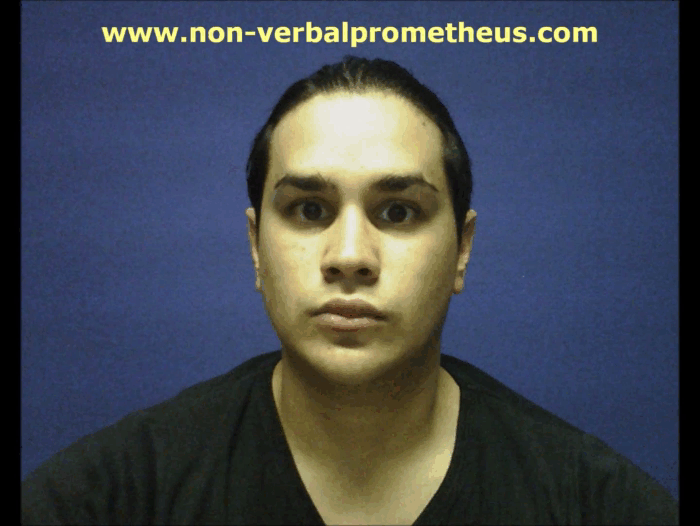

Head and Eye
66
Movement / Description
Cross-eye
Facial Muscle involved
–
From AU 0 to 66
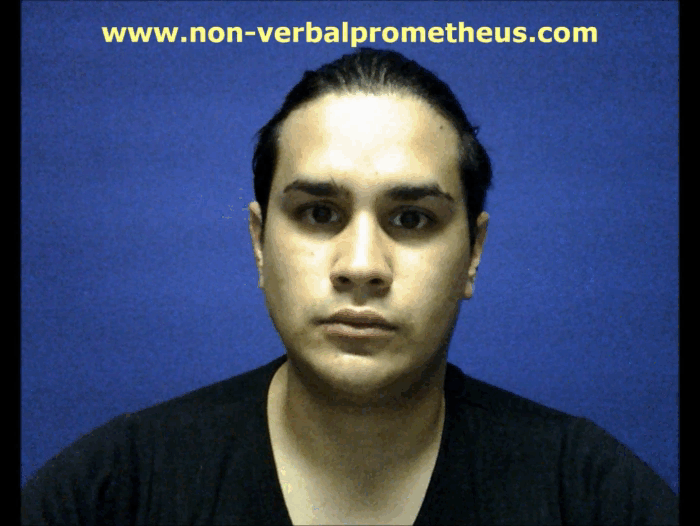

Head and Eye
M68
Movement / Description
Upward rolling of eyes
Facial Muscle involved
–
From AU 0 to M68
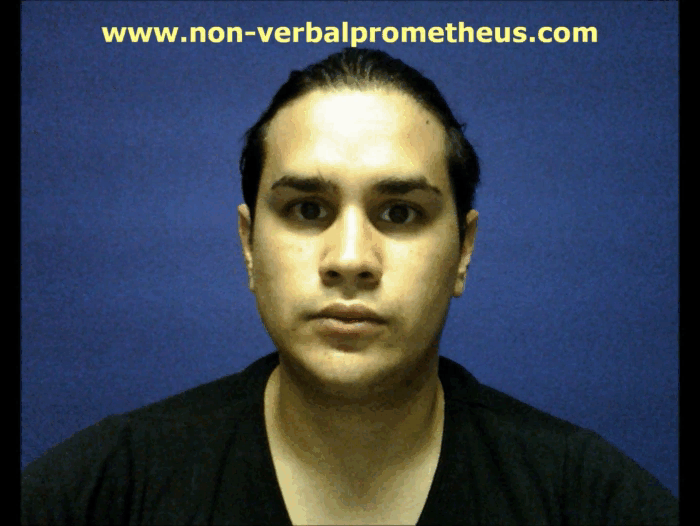

Head and Eye
M69
Movement / Description
Eyes positioned to look at other person; Head and/or eyes look at other person
Facial Muscle involved
–
From AU 0 to M69
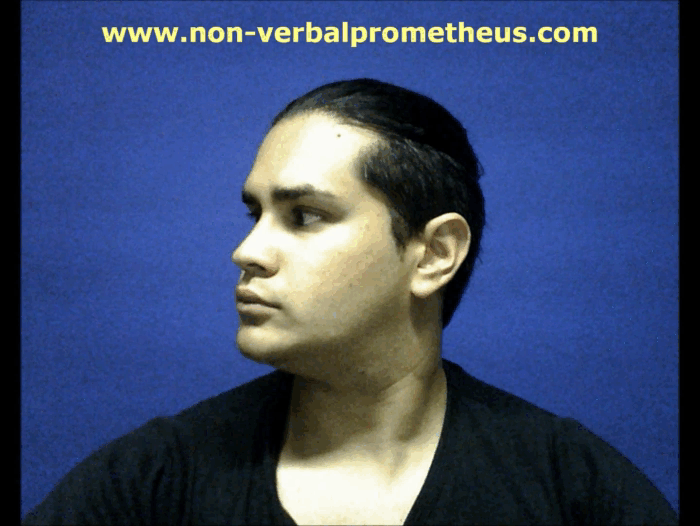

Visibility codes
70
Movement / Description
Brows and forehead not visible
Facial Muscle involved
–
From AU 0 to 70
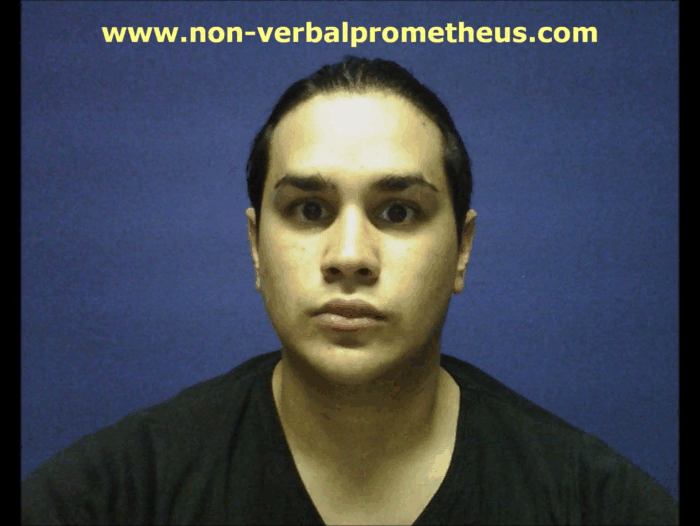

Visibility codes
71
Movement / Description
Eyes not visible
Facial Muscle involved
–
From AU 0 to 71
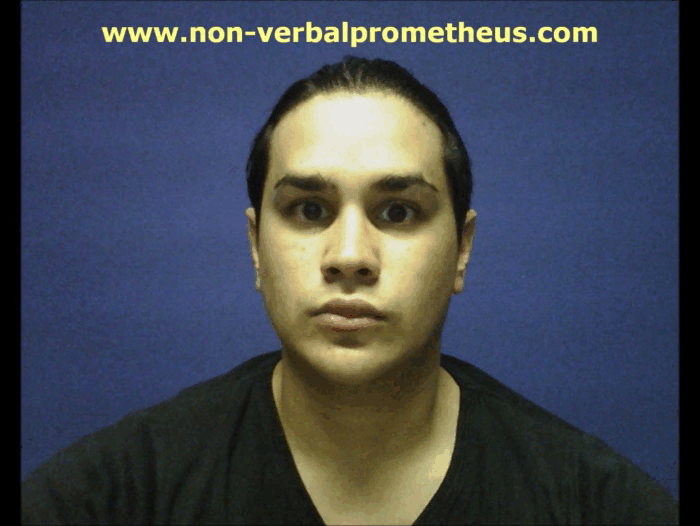

Visibility codes
72
Movement / Description
Lower face not visible
Facial Muscle involved
–
From AU 0 to 72
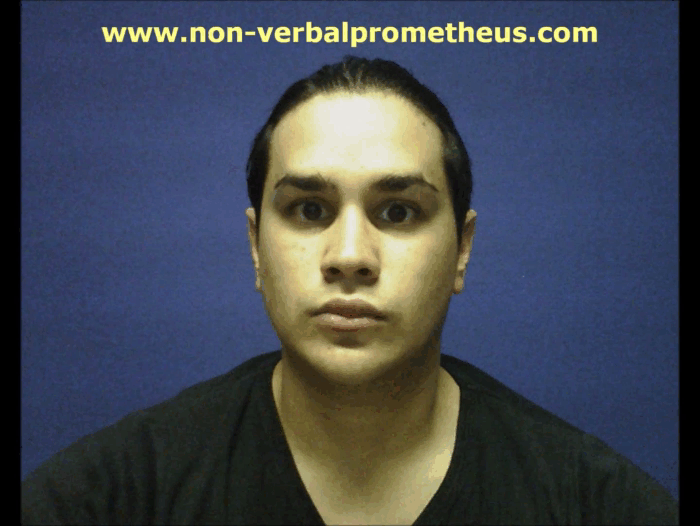

Visibility codes
73
Movement / Description
Entire face not visible
Facial Muscle involved
–
From AU 0 to 73
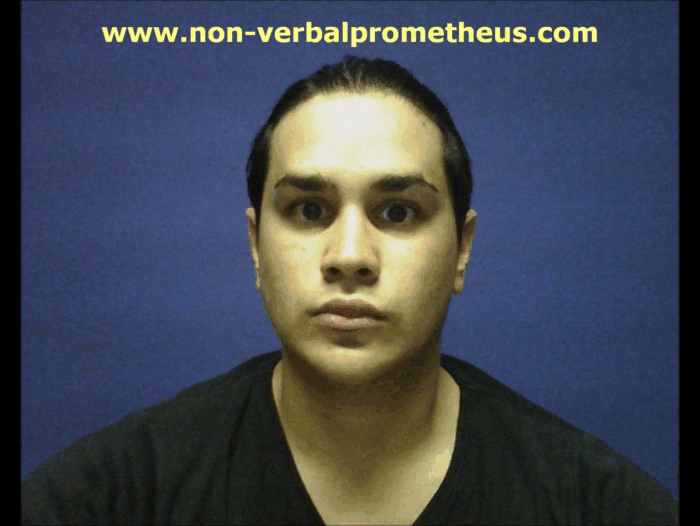

Visibility codes
74
Movement / Description
Unsociable
Facial Muscle involved
–
From AU 0 to 74
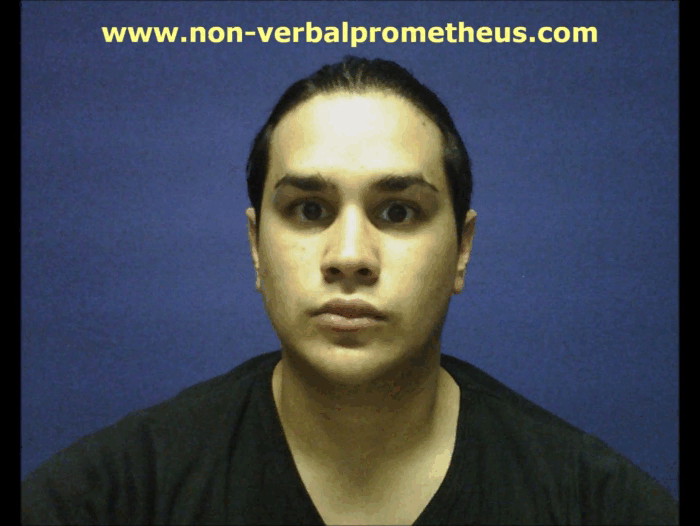

Action Descriptor
AD 80
Movement / Description
Swallow
Facial Muscle involved
–
From AU 0 to AD 80
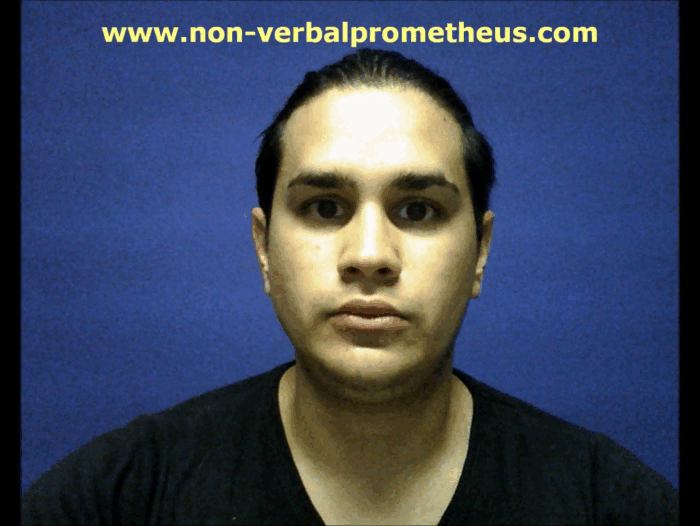

Action Descriptor
AD 81
Movement / Description
Chewing
Facial Muscle involved
–
From AU 0 to AD 81



Action Descriptor
AD 82
Movement / Description
Shoulder shrug
Facial Muscle involved
–
From AU 0 to AD 82
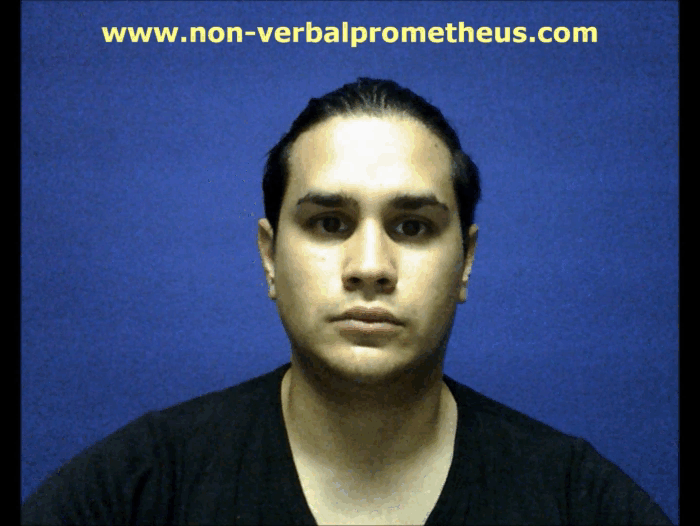

Head and Eye
M83
Movement / Description
Head upward and to the side
Facial Muscle involved
–
From AU 0 to M83
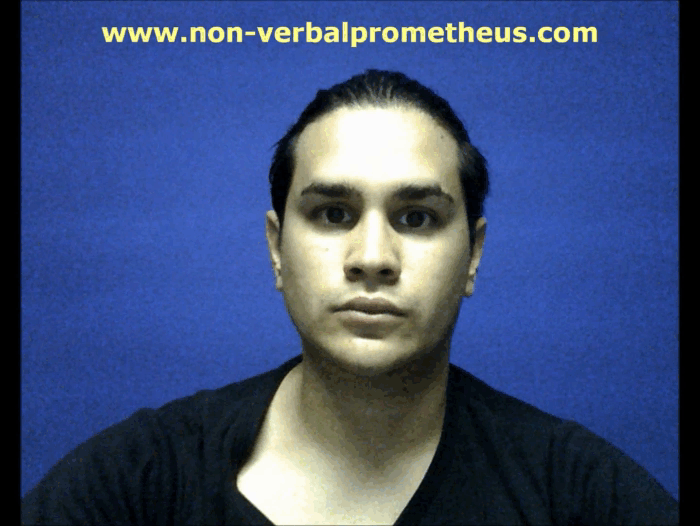

Action Descriptor
AD 84
Movement / Description
Head shake back and forth
Facial Muscle involved
–
From AU 0 to AD 84
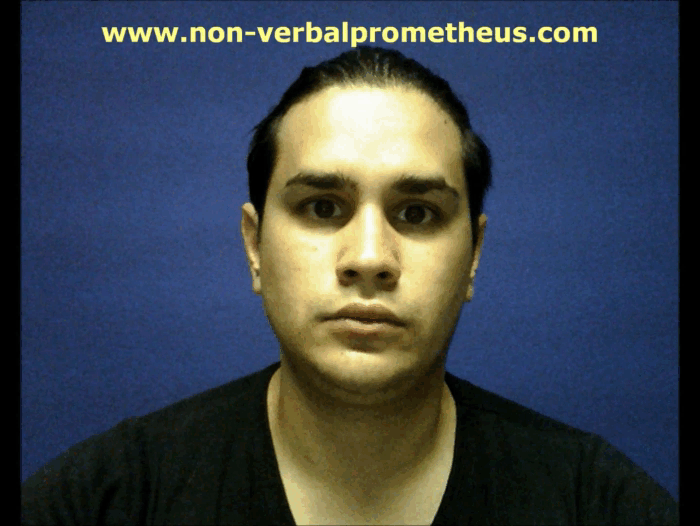

Action Descriptor
AD 85
Movement / Description
Head nod up and down
Facial Muscle involved
–
From AU 0 to AD 85
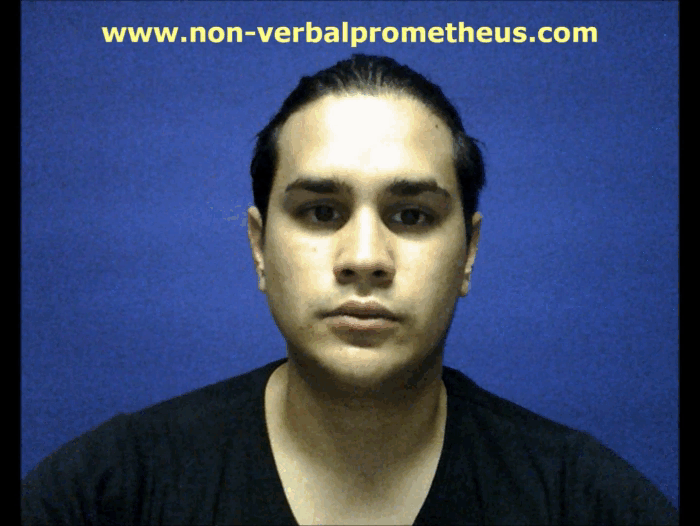

Unclear Codes
AD 91
Movement / Description
Flash
Facial Muscle involved
–
From AU 0 to AD 91



Unclear Codes
AD 92
Movement / Description
Partial Flash
Facial Muscle involved
–
From AU 0 to AD 92



Wikipedia Adds
Movement / Description
Shiver/tremble
Facial Muscle involved
–
From AU 0 to AD 97
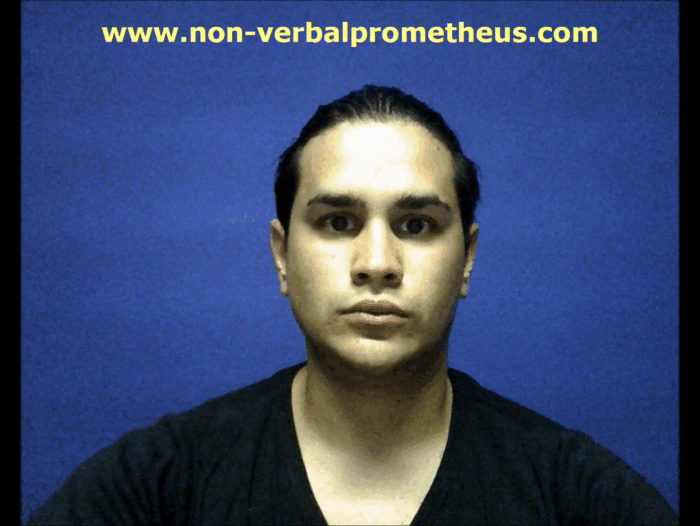

Wikipedia Adds
Movement / Description
Fast up-down look
Facial Muscle involved
–
From AU 0 to AD 98
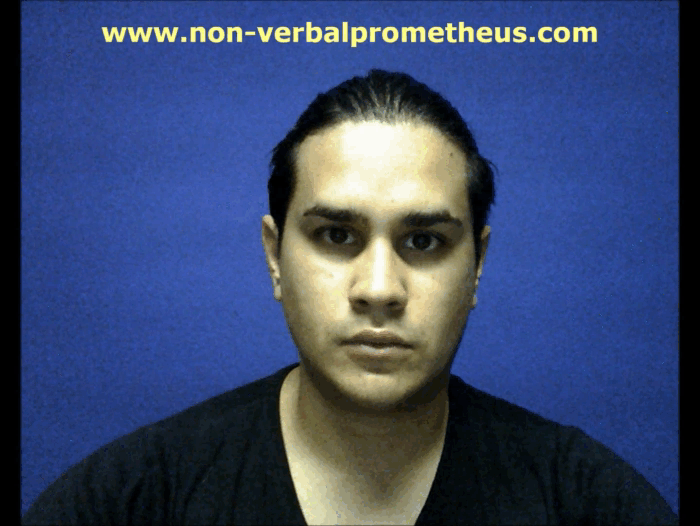

The individual Action Units, if activated at any given time, are called Combination of AUs. Some examples (among the over 10,000 possible combinations) are shown in the Examples of Facial Expressions (ENG).






